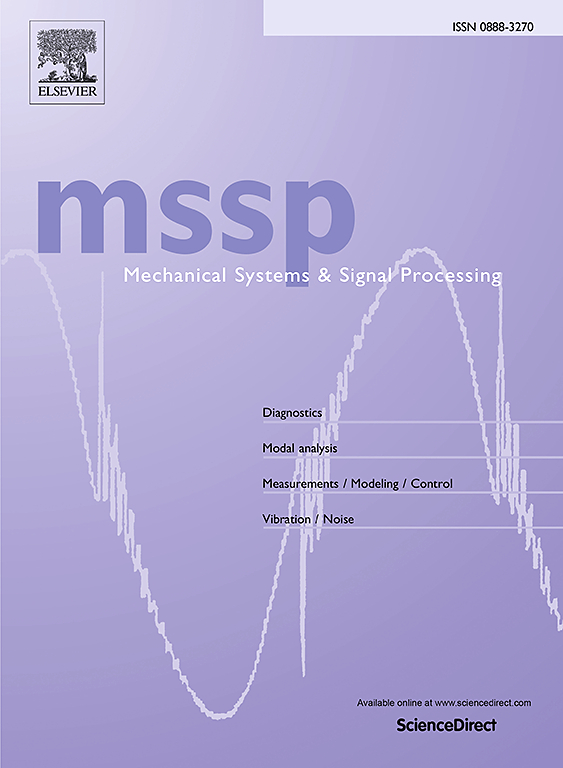Learnable wavelet-driven physically interpretable networks for bearing fault diagnosis under variable speed
IF 8.9
1区 工程技术
Q1 ENGINEERING, MECHANICAL
引用次数: 0
Abstract
Variable speed conditions pose great challenges for intelligent bearing fault diagnosis. The popular intelligent fault diagnosis models neglect the effect of rotational speed when extracting features, meantime the extracted features lack the physical meaning. To this end, a learnable wavelet-driven physically interpretable (LWPI) network is proposed for diagnosing bearing faults under variable speed. Firstly, an entropy-based local peak search (LPS) algorithm with an adaptive instantaneous frequency (IF) search range is designed to extract the rotational frequency ridge from vibration signals, and it can effectively suppress the noise and adjacent interference components. Based on the extracted rotational speed information, a learnable multi-wavelet filter layer is constructed to guide the model in adaptively mining features with physical meaning. Next, a convolution block is constructed to mine the high-dimensional features, followed by a linear dense layer designed for fault classification. Experiments on bearing fault diagnosis under variable speed conditions demonstrate that the proposed LWPI network consistently outperforms five advanced methods. Meanwhile, the efficacy of the entropy-based LPS algorithm and learnable multi-wavelet filter layer are respectively verified by the ablation experiments.
变速轴承故障诊断的可学习小波驱动物理可解释网络
变速工况对轴承故障的智能诊断提出了很大的挑战。目前流行的智能故障诊断模型在提取特征时忽略了转速的影响,同时提取的特征缺乏物理意义。为此,提出了一种可学习的小波驱动物理可解释(LWPI)网络用于变速轴承故障诊断。首先,设计了一种具有自适应瞬时频率搜索范围的基于熵的局部峰值搜索(LPS)算法,从振动信号中提取旋转频率脊,有效抑制噪声和相邻干扰分量;基于提取的转速信息,构建可学习的多小波滤波层,引导模型自适应挖掘具有物理意义的特征。其次,构造卷积块来挖掘高维特征,然后设计线性密集层用于故障分类。在变速条件下的轴承故障诊断实验表明,所提出的LWPI网络始终优于五种先进的故障诊断方法。同时,通过烧蚀实验验证了基于熵的LPS算法和可学习的多小波滤波层的有效性。
本文章由计算机程序翻译,如有差异,请以英文原文为准。
求助全文
约1分钟内获得全文
求助全文
来源期刊

Mechanical Systems and Signal Processing
工程技术-工程:机械
CiteScore
14.80
自引率
13.10%
发文量
1183
审稿时长
5.4 months
期刊介绍:
Journal Name: Mechanical Systems and Signal Processing (MSSP)
Interdisciplinary Focus:
Mechanical, Aerospace, and Civil Engineering
Purpose:Reporting scientific advancements of the highest quality
Arising from new techniques in sensing, instrumentation, signal processing, modelling, and control of dynamic systems
 求助内容:
求助内容: 应助结果提醒方式:
应助结果提醒方式:


